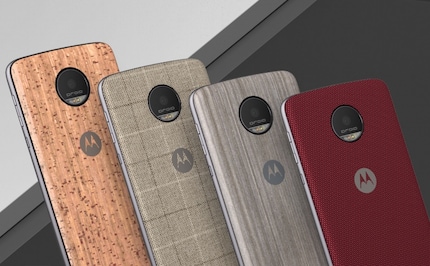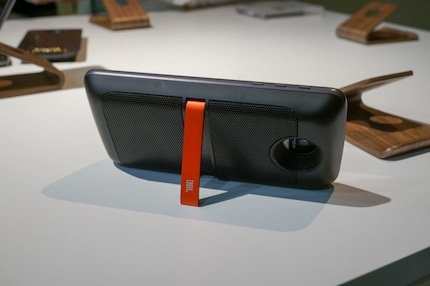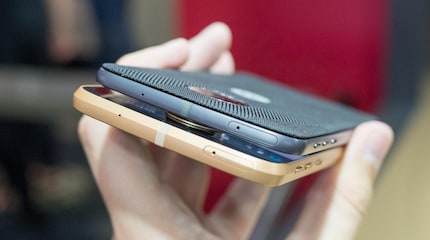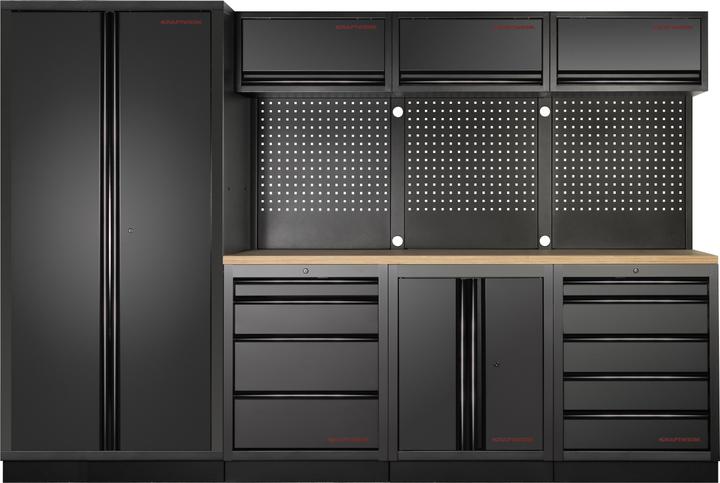
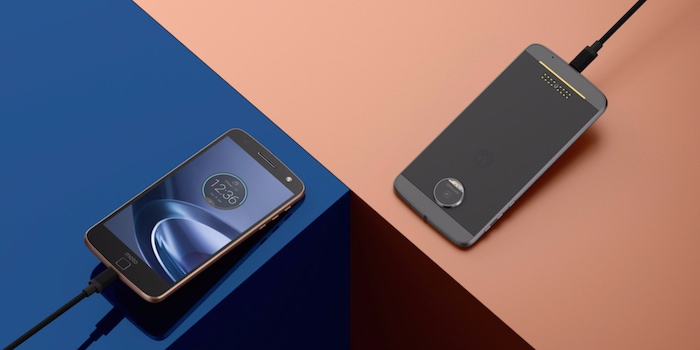
The new Moto Z does without a headphone jack, but can be expanded with modules
Modular devices seem to be the latest craze in the smartphone industry. After LG and Google, Lenovo is now presenting its latest flagships with expandable components such as a larger battery or a better speaker.
The smartphone trend is slowly coming to a standstill. As everyone will soon have a device and development is no longer making quantum leaps, enthusiasm for new devices is waning year on year. Modular smartphones are the latest craze to lure buyers into spending money. Devices that are given new features with various attachable elements. LG led the way with the G5 and Motorola is following suit with the Moto Z and Moto Z Force.
Just plug it in and you're done
The modules work without pairing or special software and are recognised directly by the Moto Z. Motorola also announced that the modules will also be compatible with future versions of the Moto Z.
The JBL module turns your smartphone into a portable speaker.Two models: one thin, one shatterproof
The Moto Z itself comes in two variants. The Moto Z and the Moto Z Force. Both have a 5.5-inch Amoled display with 2560x1440 pixels and a Snapdragon 820 processor with 4GB of RAM. There is also 32GB or 64GB of memory, which can be expanded using a microSD card. A fingerprint scanner is of course also available.
One difference between the devices is their thickness. Motorola claims that the Moto Z is currently the thinnest smartphone at 5.2 millimetres. It also "only" has a 2600mAh battery and a 13-megapixel camera with optical image stabilisation. This can also be found in the Moto Z Force, but in a 21-megapixel camera. Other advantages of the Force include a 3500mAh battery and a shatterproof display. On the other hand, the Force measures 7 millimetres.
Bye bye headphone socket
Another special feature that will not please everyone is the fact that both models do away with the classic 3.5-millimetre headphone jack. A USB-C port is the only connection. At least Motorola provides an adapter from USB-C to headphone socket. Alternatively, you can simply use Bluetooth headphones.
When and at what price the devices will be available in Switzerland is not yet known. In the USA, sales will start in the summer.
As a child, I wasn't allowed to have any consoles. It was only with the arrival of the family's 486 PC that the magical world of gaming opened up to me. Today, I'm overcompensating accordingly. Only a lack of time and money prevents me from trying out every game there is and decorating my shelf with rare retro consoles.
From the latest iPhone to the return of 80s fashion. The editorial team will help you make sense of it all.
Show all